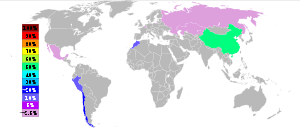A soured economy has prompted a boom in crowdsourcing, but this is a creative, efficient trend that will outlast the recession.
Some have predicted that crowdsourcing is the future of the marketing, advertising, and industrial design industries. The phenomenon, they argue, will accelerate creativity across a larger network.
Others, meanwhile, have predicted this practice of opening up a task to the public instead of keeping it in-house or using a contractor will be the demise of those businesses because of the downward pressure on prices. If LG crowdsources a new cell phone design on CrowdSpring for $20,000, as it did recently, what happens to the old model of paying a design firm millions of dollars for the same project?
So which is it? Does crowdsourcing represent the beginning of the end of creative organizations? Or does it herald the beginning of something bigger and transformational for those agencies—and for business in general?
Here’s my take on why crowdsourcing’s here to stay:
The current global economic conditions have forced all of us to do more with less. Unemployed workers now look for new ways to participate. They may not be able to find traditional paid work in their chosen field, so they’re turning to crowdsourcing marketplaces such as InnoCentive, TopCoder, uTest, and CrowdSpring. Participants sharpen their creative skills, stay involved with the things they love to do and—most important—get noticed. While these crowdsourcing marketplaces do pay the winners of contests—InnoCentive rewards of up to $50,000—the real point is that the traditional forms of compensation connecting corporations to creativity are splintering beyond money to include fame and community.
Harnessing the Crowd
Related articles by Zemanta
- Crowdsourcing (slideshare.net)
- Defining Common Collaboration Tensions (blogs.harvardbusiness.org)
- The Agony of Choosing the Winning Design: Will you get it right? (crowdspring.com)
- uTest Is Crowdsourcing Software Testing (rev2.org)
![Reblog this post [with Zemanta]](http://img.zemanta.com/reblog_b.png?x-id=92b912b5-2555-4e58-b589-d76cb58fbeba)








